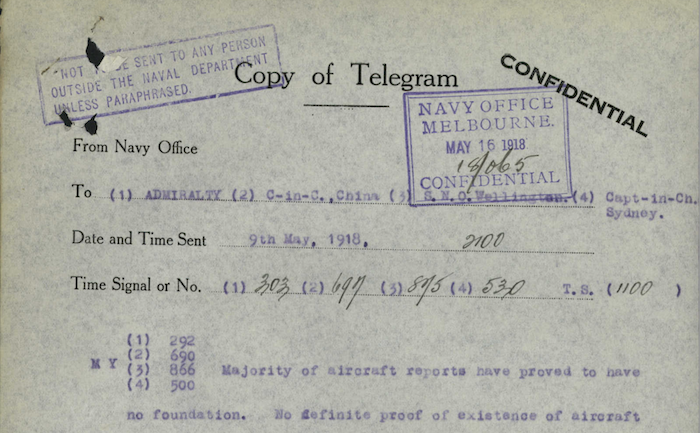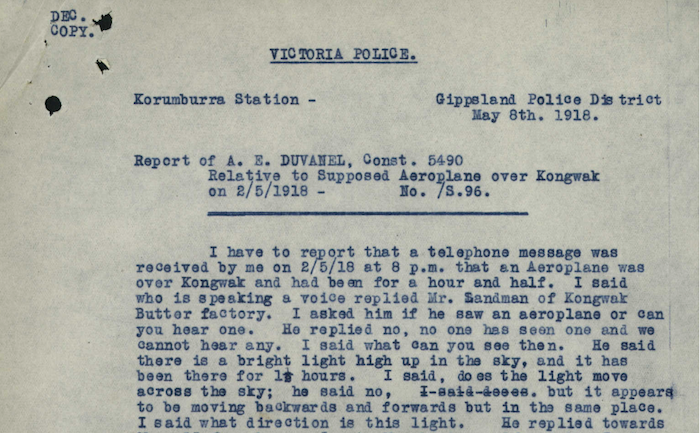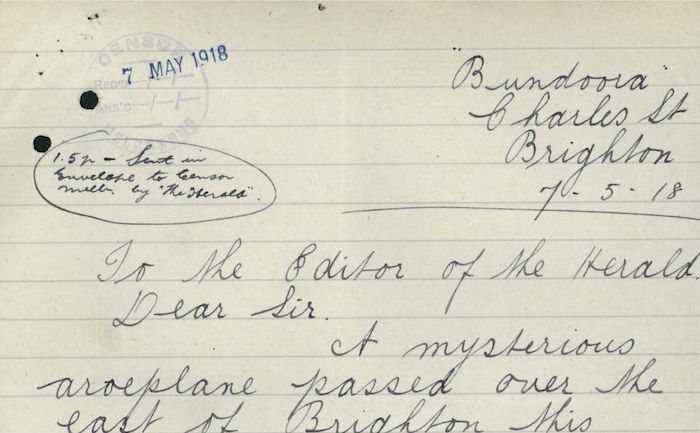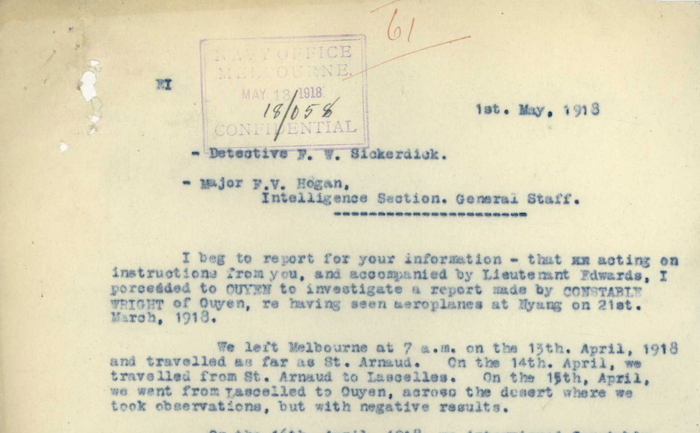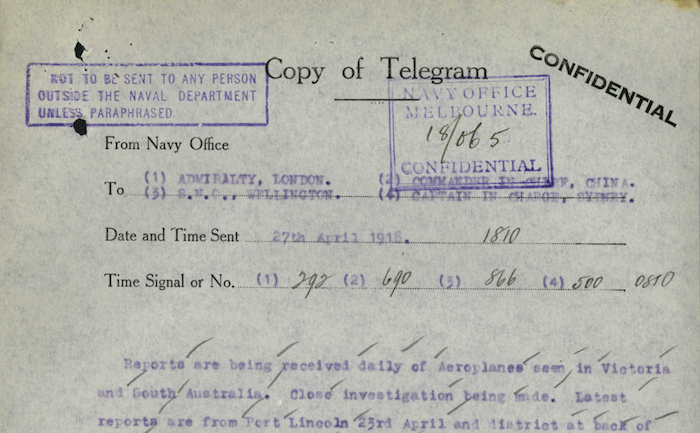Thursday, 9 May 1918
NAA: MP1049/1, 1918/066, page 457 is a copy of a telegram sent from the Navy Office to the Admiralty, London; Commander in Chief, China; Senior Naval Officer, Wellington; and Captain in Charge, Sydney. It reads: Majority of aircraft reports have proved to have no foundation. No definite proof of existence of aircraft obtained. Exhaustive enquiries […]

